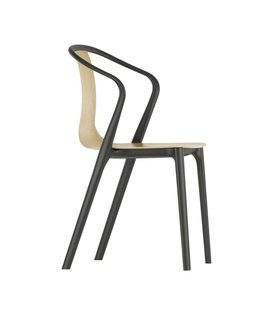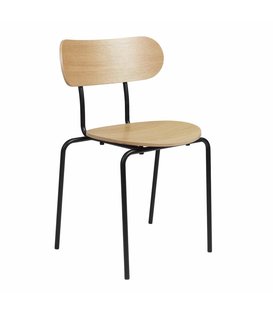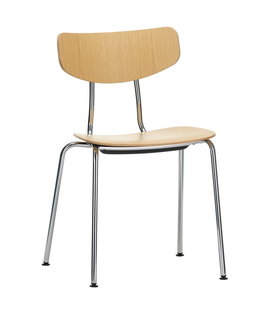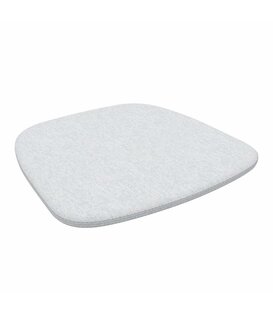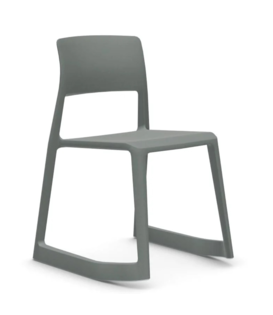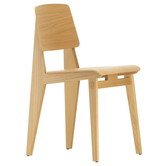
- Gratis verzending NL/B vanaf €100,-
- Nordic New bestaat 25 jaar
- Showroom 6 dagen p. week open van 10-17.00
- T 085 1303619 - info@nordicnew.com
Vitra Chaise Tout Bois Chair - Natural Oak .
Jean Prouvé designed the Compas Direction desk in the 1950s, with this matching chair.
The shape of the Chaise Tout Bois expresses Prouvé's intention to give extra strength to the transition point between the seat and the backrest, where the weight of the human anatomy is greatest. The profile of the rear frame part - rear legs and backrest support - refers to this load transfer and is a characteristic feature of Prouvé's designs for both furniture and architecture.
Prouvé made several prototypes of this chair during the war to test the structural strength as well as the joints, leg position and connection between seat and back. The type of wood chosen depended on what was available at the time.
After the war, there was again a sufficient supply of oak wood, which was widely used in France to build ships and cathedral roofs because of its hardness and strength. Because these properties are also ideal for an all-wood chair, the Chaise Tout Bois was eventually made of oak and plywood
It is not without reason that he received the Grand Prix in 1952 and was also the winner of a race at the University of Nancy. At the age of 80 he also received the Erasmus Prize. Characteristic for this designer is that he sought contemporary solutions for contemporary problems and that he mainly thought in possibilities and not in impossibilities.
Dimensions: The chair measures 46 centimeters wide, and is 49 centimeters deep, the height is 80.5 centimeters and the seating area has a height of 46 centimeters.
*Make your beautiful Vitra chair even more pleasant with the loose Soft Seat cushions from Hella Jongerius. The beautiful Soft Seat cushions are made of soft furniture fabrics and are available in three types: square type A, organic type B and round type C. Cushion A and C is suitable for this Vitra chair.
There is a choice in a natural oak variant or a dark stained variant. The seat and back of the chair is made of oak wood veneer. The base is made of solid oak and finished with a protective lacquer layer.
It is not without reason that he received the Grand Prix in 1952 and was also the winner of a race at the University of Nancy. At the age of 80 he also received the Erasmus Prize. Characteristic for this designer is that he sought contemporary solutions for contemporary problems and that he mainly thought in possibilities and not in impossibilities.
About Jean Prouvé:
Jean Prouvé completed his training as a metal craftsman before opening his own workshop in Nancy in 1924. In the following years he created numerous furniture designs and in 1947 Prouvé founded his own factory. Due to disagreements with the majority shareholders, he left the company in 1953. In the following decades, Prouvé served as a consulting engineer on a number of important architectural projects in Paris.
He left his mark on architectural history again in 1971, when he was instrumental in selecting the design of Renzo Piano and Richard Rogers for the Center Pompidou as chairman of the competition jury. Prouvé's work encompasses a wide range of objects, from a letter opener to door and window fittings, from lighting and furniture to facade elements and prefabricated houses, from modular building systems to large exhibition structures - essentially almost anything suitable for industrial production methods.
In close collaboration with the Prouvé family, Vitra started publishing designs from this great French constructor in 2002.
Article number: 210 645 00
Weight: 1000






